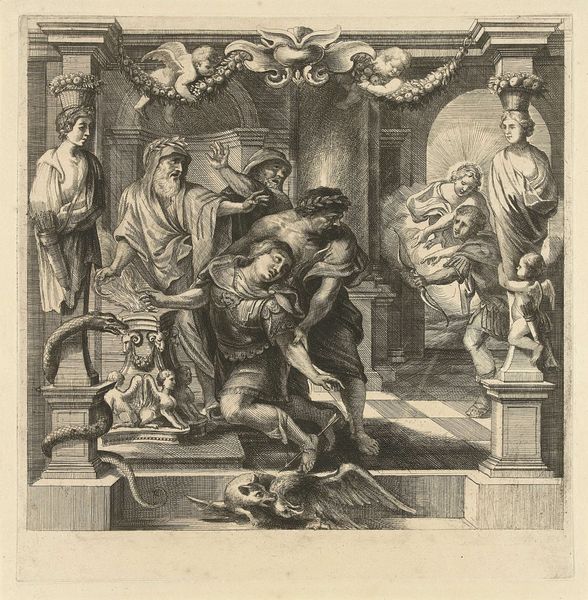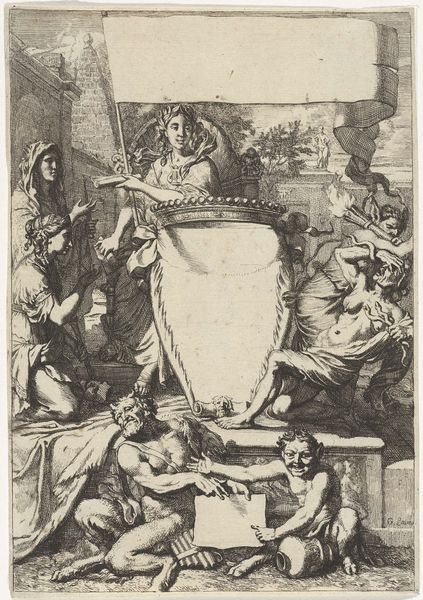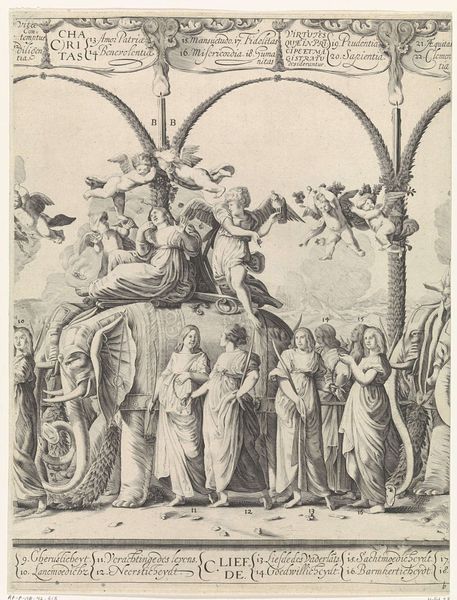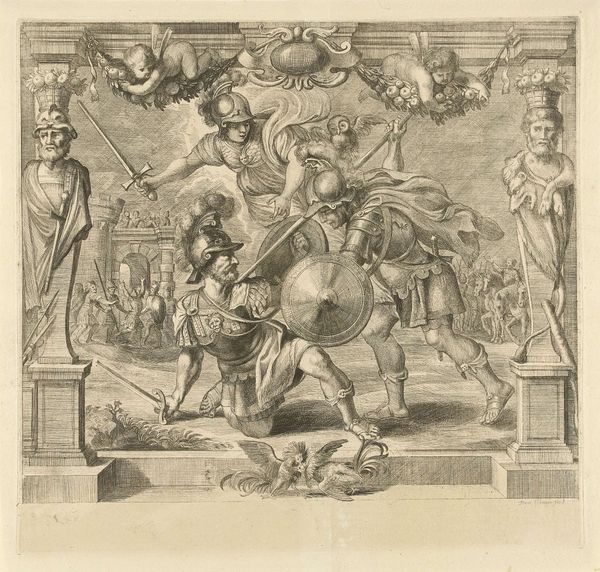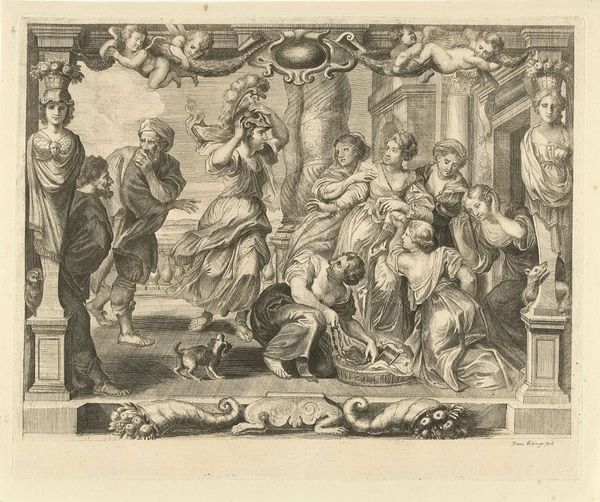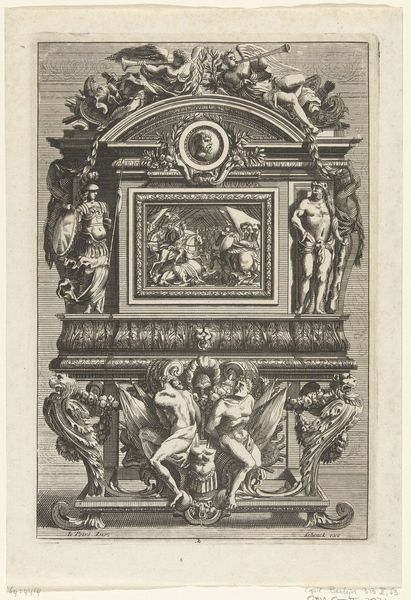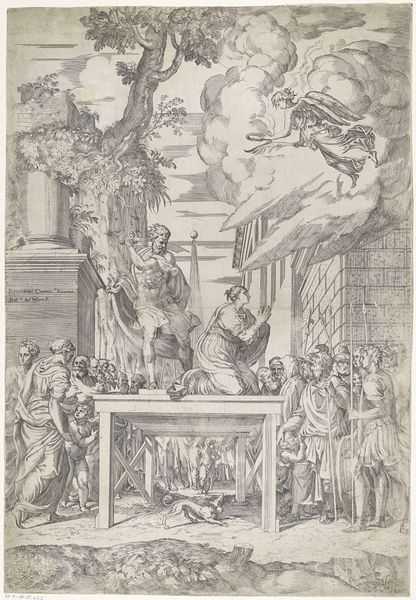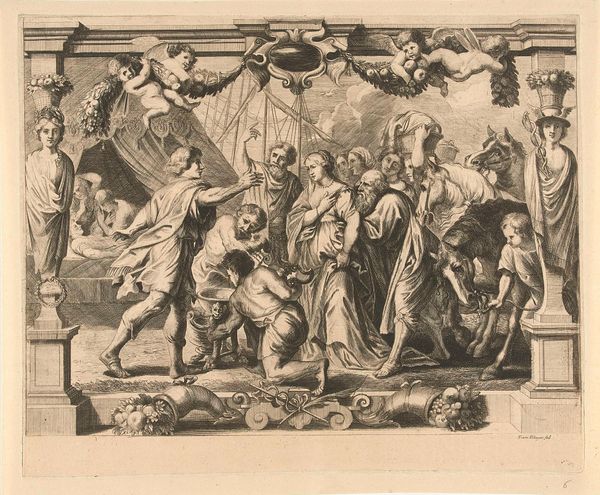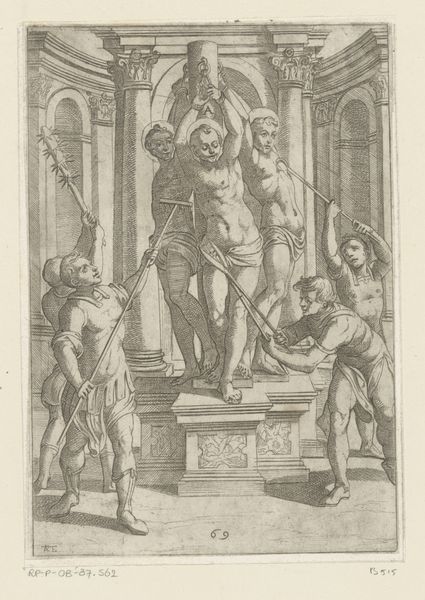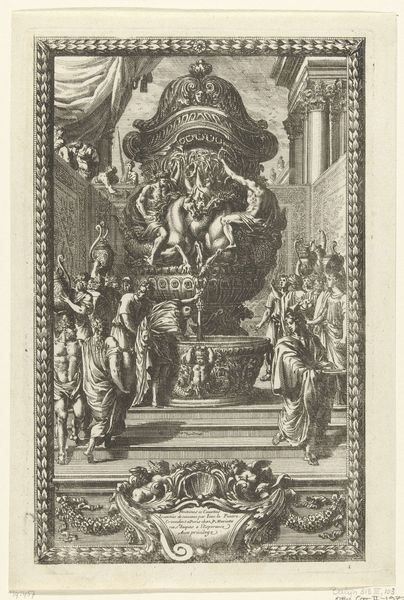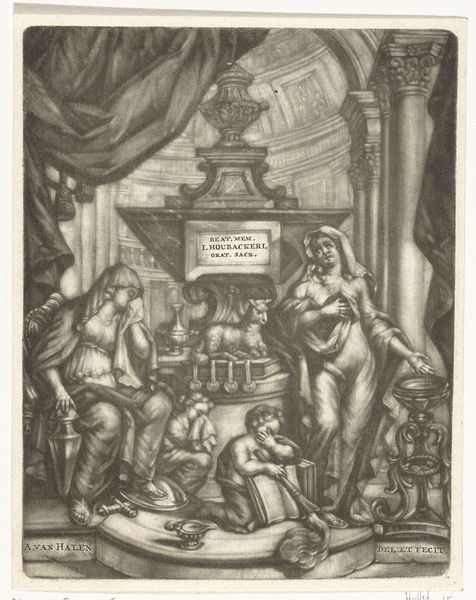
engraving
#
portrait
#
allegory
#
baroque
#
figuration
#
line
#
history-painting
#
engraving
Dimensions: height 319 mm, width 290 mm
Copyright: Rijks Museum: Open Domain
This is Franz Ertinger’s engraving, "Twist van Achilles met Agamemnon." Here, divine figures flank a dispute, but let us focus on the prostrate lion at the foot of the dais, a profound symbol across millennia. In ancient Mesopotamia, the lion represented royal power, courage, and dominion, often associated with gods and kings. We see the motif echoed in dynastic Egypt and later, throughout the Roman Empire. Yet, in Ertinger’s piece, the lion lies defeated. What does this say of the conflict depicted? Is the heroic Achilles’ rage somehow neutered? Consider, also, the presence of snakes twining around the figure to the right: often associated with healing and knowledge, but also with deception and chaos. These symbols, interwoven with the narrative, tap into a collective memory, engaging us on a subconscious level. They remind us that these images are not static, but are dynamic, evolving in meaning as they traverse time.
Comments
No comments
Be the first to comment and join the conversation on the ultimate creative platform.

